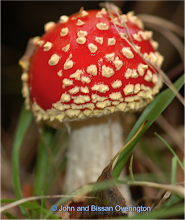ATC code:L01XE15
Wikipedia:Trametinib
Trametinib is the first approved targeted MEK inhibitor. It inhibits the kinase catalytic activity of its targets, mitogen-activated extracellular signal regulated kinase 1 and 2 ( MAP2K1 AKA MEK1, Uniprot:Q02750) and MAP2K2 AKA MEK2, Uniprot:P36507).
The sequences of the targets are here:
>sp|Q02750|MP2K1_HUMAN Dual specificity mitogen-activated protein kinase kinase 1 OS=Homo sapiens GN=MAP2K1 PE=1 SV=2 MPKKKPTPIQLNPAPDGSAVNGTSSAETNLEALQKKLEELELDEQQRKRLEAFLTQKQKV GELKDDDFEKISELGAGNGGVVFKVSHKPSGLVMARKLIHLEIKPAIRNQIIRELQVLHE CNSPYIVGFYGAFYSDGEISICMEHMDGGSLDQVLKKAGRIPEQILGKVSIAVIKGLTYL REKHKIMHRDVKPSNILVNSRGEIKLCDFGVSGQLIDSMANSFVGTRSYMSPERLQGTHY SVQSDIWSMGLSLVEMAVGRYPIPPPDAKELELMFGCQVEGDAAETPPRPRTPGRPLSSY GMDSRPPMAIFELLDYIVNEPPPKLPSGVFSLEFQDFVNKCLIKNPAERADLKQLMVHAF IKRSDAEEVDFAGWLCSTIGLNQPSTPTHAAGV >sp|P36507|MP2K2_HUMAN Dual specificity mitogen-activated protein kinase kinase 2 OS=Homo sapiens GN=MAP2K2 PE=1 SV=1 MLARRKPVLPALTINPTIAEGPSPTSEGASEANLVDLQKKLEELELDEQQKKRLEAFLTQ KAKVGELKDDDFERISELGAGNGGVVTKVQHRPSGLIMARKLIHLEIKPAIRNQIIRELQ VLHECNSPYIVGFYGAFYSDGEISICMEHMDGGSLDQVLKEAKRIPEEILGKVSIAVLRG LAYLREKHQIMHRDVKPSNILVNSRGEIKLCDFGVSGQLIDSMANSFVGTRSYMAPERLQ GTHYSVQSDIWSMGLSLVELAVGRYPIPPPDAKELEAIFGRPVVDGEEGEPHSISPRPRP PGRPVSGHGMDSRPAMAIFELLDYIVNEPPPKLPNGVFTPDFQEFVNKCLIKNPAERADL KMLTNHTFIKRSEVEEVDFAGWLCKTLRLNQPGTPTRTAV
Standard dose is 2mg once daily, with lower doses recommended if side effects are observed. Significant, use limiting side effects are seen in many patients.
Mekinist is produced by GSK
The Prescribing Information is here.



Comments